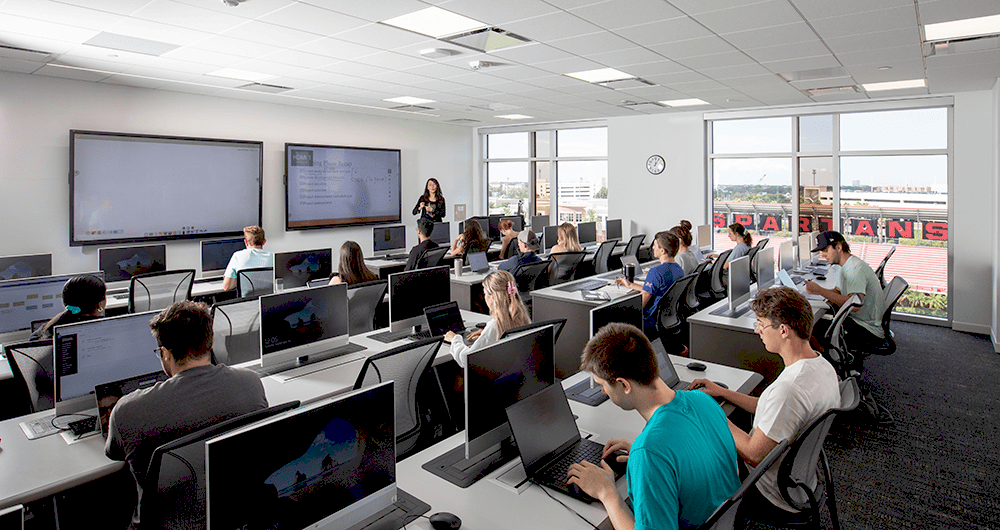Drone education programs equip students with essential skills for future careers, covering FAA exam preparation, benefits of training, and technologies used. Positive feedback from students and teachers emphasizes the programs’ impact on engagement and skill development.
Introduction to Drone Education
Drone education programs are becoming increasingly popular in schools across the United States. These programs aim to equip students with essential skills in operating drones, which have applications in various fields such as agriculture, photography, and emergency services. Schools like Harrison High School in New York and Northside High School in Arkansas have implemented comprehensive drone pilot training courses. These institutions not only provide hands-on experience but also prepare students for the FAA exam, ensuring they are well-versed in the legal and safety aspects of drone operation.
FAA Exam Preparation
Courses that prepare students for the FAA exam are integral to drone education programs. These courses cover crucial topics such as airspace regulations, weather patterns, and drone maintenance. For instance, the Drone Pilot Ground School offers a structured curriculum that includes practice tests, which helps students familiarize themselves with the exam format. Schools implementing these programs report a higher success rate among students passing the FAA certification, which is a significant step towards becoming a licensed drone pilot.
Benefits of Learning with Drones
Learning with drones provides numerous benefits for students. Firstly, it enhances their technical skills, including problem-solving and critical thinking. Students engage in real-world applications of science, technology, engineering, and mathematics (STEM) through hands-on projects. Moreover, drone training fosters teamwork and collaboration as students often work in groups to plan and execute missions. According to a recent study, students who participated in drone education programs showed a marked increase in engagement and motivation towards their studies. This not only prepares them for future careers but also instills a sense of responsibility and creativity.
Skills Gained from Drone Training
Drone training equips students with a variety of essential skills that are applicable in many areas. Key skills acquired during drone courses include:
- Technical Proficiency: Students learn to operate drones, understanding controls, navigation, and flight mechanics.
- Problem-Solving: They face real-world challenges that require quick thinking and innovative solutions.
- Teamwork: Many projects involve group collaboration, fostering communication and collaboration skills.
- Data Analysis: Students often collect and analyze aerial data, enhancing their analytical skills.
- Regulatory Knowledge: Understanding FAA regulations ensures that students become responsible operators.
Moreover, these skills prepare students for various careers in technology and engineering fields. They develop a sense of responsibility as they learn to respect safety protocols and regulations. Schools report that students who engage in drone training often show improved focus and engagement in other academic areas.
Impact on Future Careers
Drone education significantly influences students’ future career paths. As industries increasingly adopt drone technology for tasks such as surveying, mapping, and aerial photography, the demand for skilled drone pilots is on the rise. Some notable impacts include:
- Career Opportunities: Students who complete drone education programs are well-positioned for careers in fields like agriculture, real estate, and emergency services.
- Technical Skills for STEM Fields: The technical skills gained are highly sought after in science, technology, engineering, and mathematics careers.
- Certification and Licensing: Successfully passing the FAA exam opens doors to professional opportunities, allowing students to work legally as commercial drone pilots.
As drone technology evolves, so do the career prospects. Students equipped with drone skills are better prepared for the job market, which increasingly values technical expertise and hands-on experience.
Successful Drone Training Programs
Several schools across the nation have implemented successful drone training programs that serve as models for others. Examples include:
- Harrison High School: Offers a comprehensive drone pilot training course that combines classroom instruction with hands-on flight experience.
- Northside High School: Their program integrates drone technology into various subjects, emphasizing cross-disciplinary learning.
- Future Tech Academy: This school partners with local businesses to provide real-world applications and internships for students.
These programs not only engage students but also prepare them for the challenges of the workforce. By showcasing successful examples, other schools can replicate these models to enhance their own drone education offerings.
Technologies Used in Drone Education
Drone education programs incorporate various technologies that enhance the learning experience for students. Key technologies include:
- Flight Simulation Software: This software allows students to practice flying drones in a virtual environment, helping them understand flight mechanics without the risk of accidents.
- GPS and Mapping Tools: Students learn to use GPS systems to navigate drones, which is essential for tasks like surveying and mapping.
- Camera and Imaging Technologies: Many programs utilize drones equipped with high-resolution cameras for aerial photography and data collection.
- Data Analysis Software: Tools for analyzing aerial data collected during flights help students interpret information for real-world applications.
- Online Learning Platforms: Many schools offer online courses that complement in-class instruction, providing flexible learning opportunities.
By integrating these technologies, schools ensure that students are well-prepared for careers in industries utilizing drone technology. Students not only learn how to fly drones but also gain experience with the tools and software that professionals use.
Reviews from Students and Teachers
Feedback from students and teachers regarding drone education programs is overwhelmingly positive. Many students report that the hands-on experience is both exciting and educational. For example, one student noted, “Flying the drone was the best part of my day! I learned so much about aerodynamics and technology while having fun.” Teachers also emphasize the program’s benefits, stating that it engages students in a way traditional subjects may not. A teacher from Northside High School remarked, “Drone education has transformed my classroom. Students who once struggled are now eager to learn and collaborate.”
Reviews consistently highlight the development of teamwork, problem-solving, and technical skills. Moreover, students appreciate the real-world applications of what they learn, noting how these skills will help them in future careers. Schools have found that positive reviews encourage more students to enroll in these programs, creating a cycle of success and interest in drone education.
Conclusion
Drone education programs in schools are not just trends; they are essential for preparing students for future careers in various fields. By providing FAA exam preparation, teaching valuable skills, and utilizing cutting-edge technologies, these programs equip students for the demands of the modern workforce. The positive feedback from students and teachers further underscores the significance of these initiatives. As drone technology continues to evolve, so will the opportunities for students trained in this field, making drone education a vital component of contemporary education.





